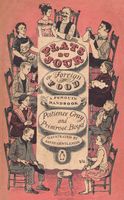Pasta
By Patience Gray and Primrose Boyd
Published 1957
In many parts of Italy, pasta is synonymous with food. A fragrant steaming dish of pasta is what the Latin stomach craves to fill the void created by a morning’s fasting in the dry heat of summer and the windswept cold of winter.
As a rule past’asciutta* is eaten at midday, and minestra in brodo † at night. These are the prelude to a meal in bourgeois homes, when not preceded by antipasto (hors d’œuvre), and are followed by a dish of meat or fish, a salad, cheese, and fruit.
The Italians, who have not yet separated art from daily life, cannot resist using a material as plastic as flour and water in a multitude of ways; hence the shapes in the form of stars, melon seeds, rings, and snail shells among the pasta for minestra in brodo, and the strings, ribbons, conch shells, coxcombs, wheels, and butterflies for past’asciutta.
In this section
Part of
Advertisement
Advertisement


